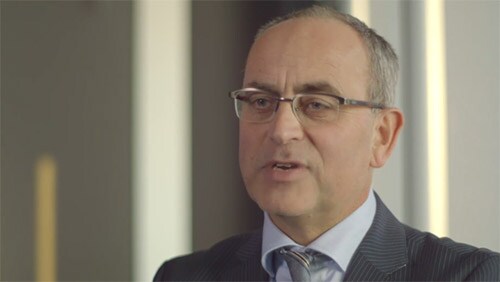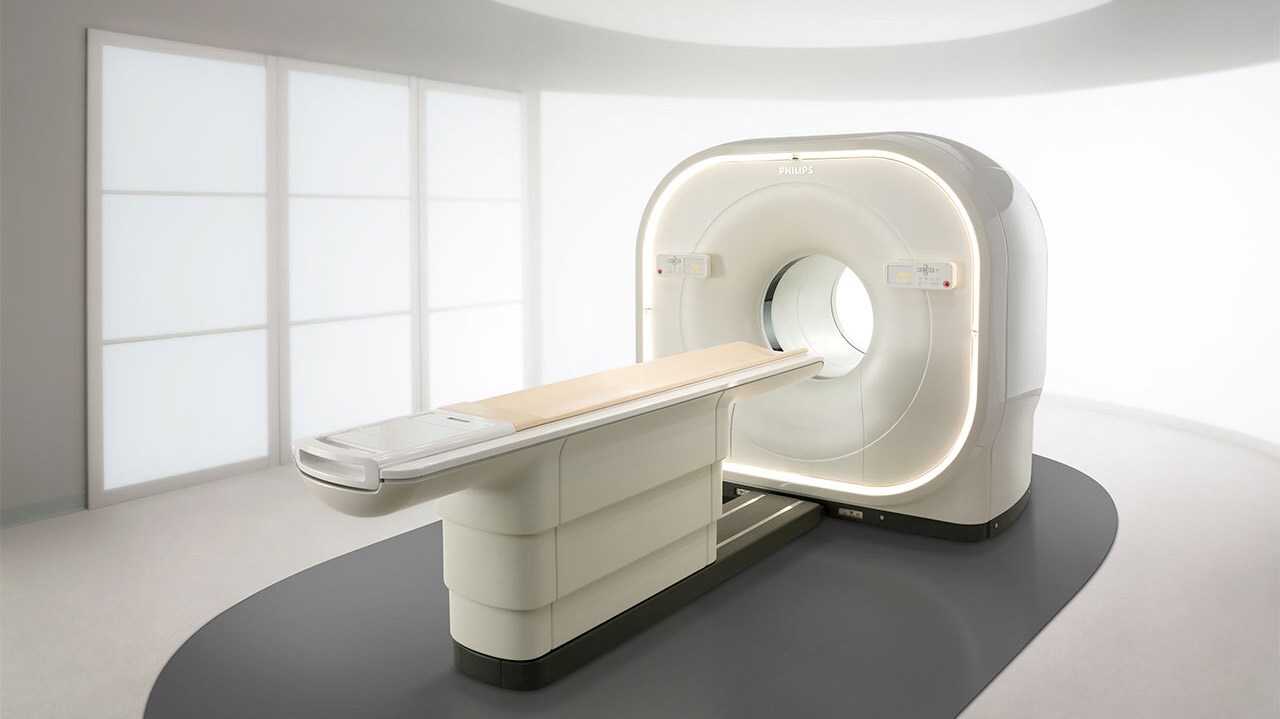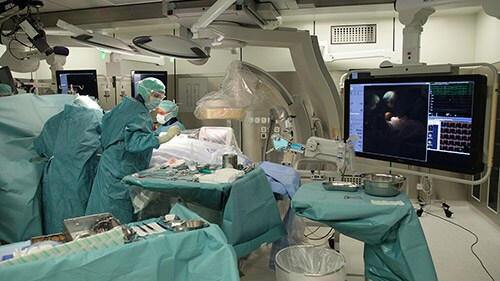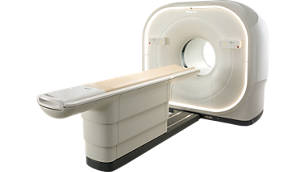Cancer treatment is shifting from one size fits all to a personalized approach. Developments in imaging technology, aimed at finding ever smaller tumors and identifying their specific characteristics, are what will make this switch possible. Two key researchers from the Netherlands Cancer Institute, one of the world’s leading Comprehensive Cancer Centres, talk about their vision for cancer treatment. This institute has recently invested in the latest imaging technologies to address these trends. This material is not for distribution/use in the USA

Marcel Stokkel (left) and Theo Ruers (right)
Investing in imaging to improve cancer treatment
“In 80% of patients we operate on, the tumor is easy to find,” says Theo Ruers, Professor of Surgical Oncology at the Netherlands Cancer Institute. “It looks like a marble within a sponge, and that marble is easy to see or feel during surgery. But in 20% of cases, the tumor is a sponge within a sponge. Difficult to find, and therefore difficult to remove. That’s why we are investing in developing image-guided surgery. We want to be able to see on a screen whether our scalpel is reaching the tumor.” The Netherlands Cancer Institute is investing in the latest diagnostic imaging equipment with the aim of improving their cancer treatment. Their brand new digital PET/CT scanner will be one of the first in Europe, allowing them to see the same level of detail while managing activity. “Our institute always wants to have the best equipment,” says Marcel Stokkel, head of Nuclear Medicine. “The first ever PET scanner with time of flight was delivered here. Until we got that scanner, we could only see lesions of 1 cm – something a surgeon would feel with his bare hands. We can now go smaller. In the future, I’d love to go down to 2 mm. That would bring you to the level of micrometastases.”
Predicting treatment response
The concept of personalized cancer treatment has caused big changes in cancer diagnostics. Stokkel says, “We now have a better view of what kind of tumor it is and what characteristics it has. With some tumors, you can see what type it is through imaging and a tracer. Sometimes, you can even predict how a patient will respond to treatment. When we use a labeled tracer, such as herceptin, in a woman with breast cancer, and the tracer isn’t absorbed, we know that the treatment isn’t working. These combination tracers can make a lot of difference to that patient, who won’t need to undergo unnecessary treatment.”
New imaging possibilities for the OR
Although personalized medicine has made strong inroads into diagnostics, Theo Ruers says the benefits haven’t trickled down to surgical oncology as much. “If you walk into a modern-day OR, it looks roughly the same as it did 30 years ago. That’s odd. Technology these days allows us to use Google to look into our own back yards with a satellite, from a height of seven hundred kilometers. Isn’t it strange that we can’t see a breast tumor from 30 centimeters away? The technology is there, but it hadn’t been integrated in our ORs yet. The new hybrid OR has broken this barrier and is a big step toward making use of all that current technology allows us to do.” The hybrid OR at the institute is from Philips. It is not only suitable for open surgery, but also for image-guided targeted therapies such as localized chemotherapy.
Providing better care for patients
The benefits of improved imaging for patients are obvious. Stokkel says, “We are increasingly able to visualize smaller lesions. That’s very important for staging cancer. This improves our ability to indicate where the tumor is, how far the disease has progressed and what treatment is needed.” Ruers says, “Those spongy tumors we couldn’t find were our Achilles’ heel. A PET scan or MRI pointed out the tumors without fail, but we couldn’t find them during surgery. Now we do have the ability to treat these patients. And because we have a better view of where to cut, we get fewer complications.” The increased sensitivity of the digital PET/CT scanner helps reduce costs and can also help improve patient care. Stokkel says, “There’s a discussion here – do we go for shorter scan times with the same activity, or do we reduce activity and keep the same scan times?”
Investing in the future
The Netherlands Cancer Institute has had a Master Research Agreement with Philips since 2011, and both Stokkel and Ruers have high expectations for this collaboration. Ruers says, “We want Google Earth-levels of imaging. We want more information about a person’s disease. Working with a commercial party, it’s much easier to get from a vision to a tangible product.” Stokkel says, “We see many possibilities for image analysis, but we don’t have all the tools we need. Software development and implementation is essential, and Philips can help us with that.” The Master Research Agreement is just one of the many ways the Netherlands Cancer Institute invests in the future of oncology. The institute is also part of the international consortium developing the MR-Linac system for image-guided radiotherapy. Of course, technology is not what it’s all about. Ruers says, “If we want this to lead to improvements for patients, we need to walk this road together. We’ve taken our first steps with Philips.”
For more information
For more information about the Philips Hybrid Suite go to the product page.




